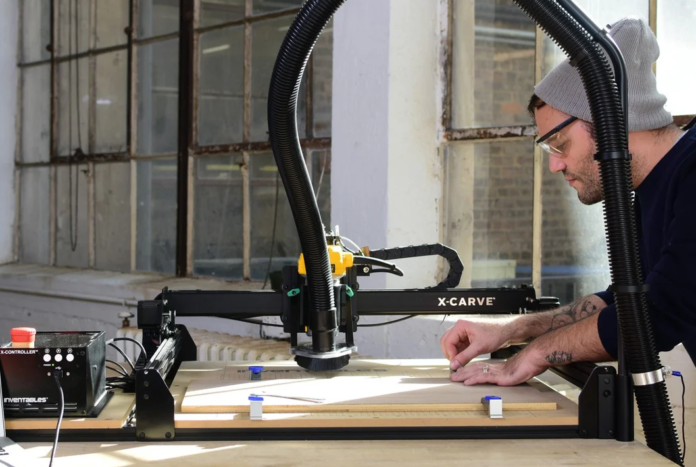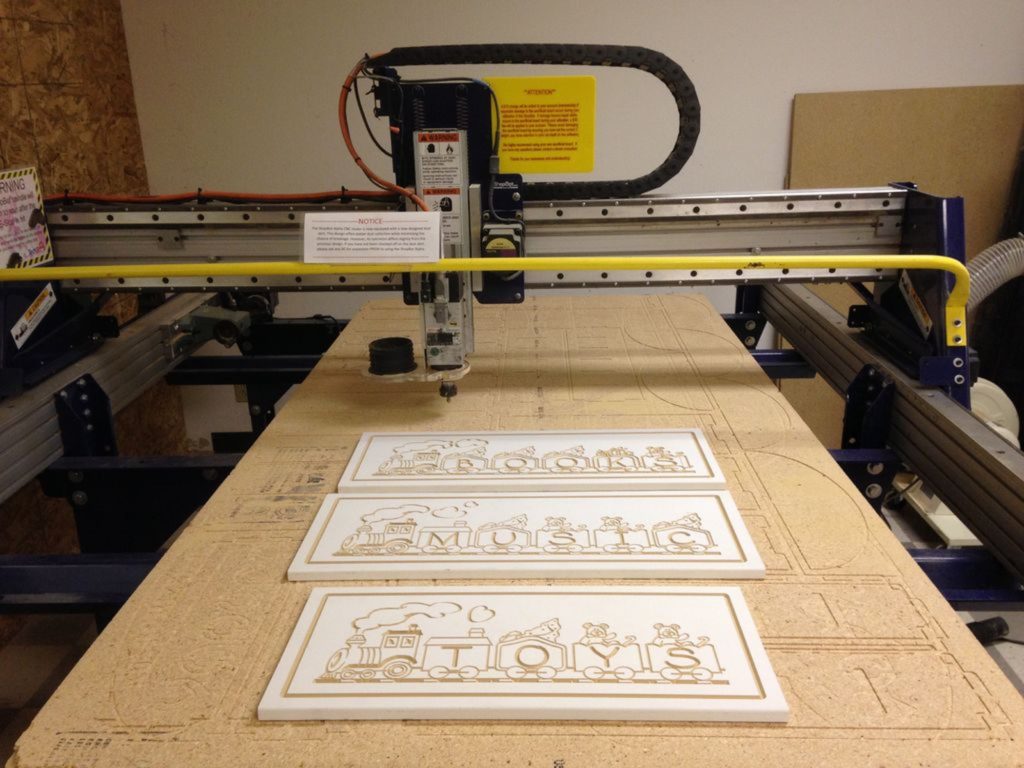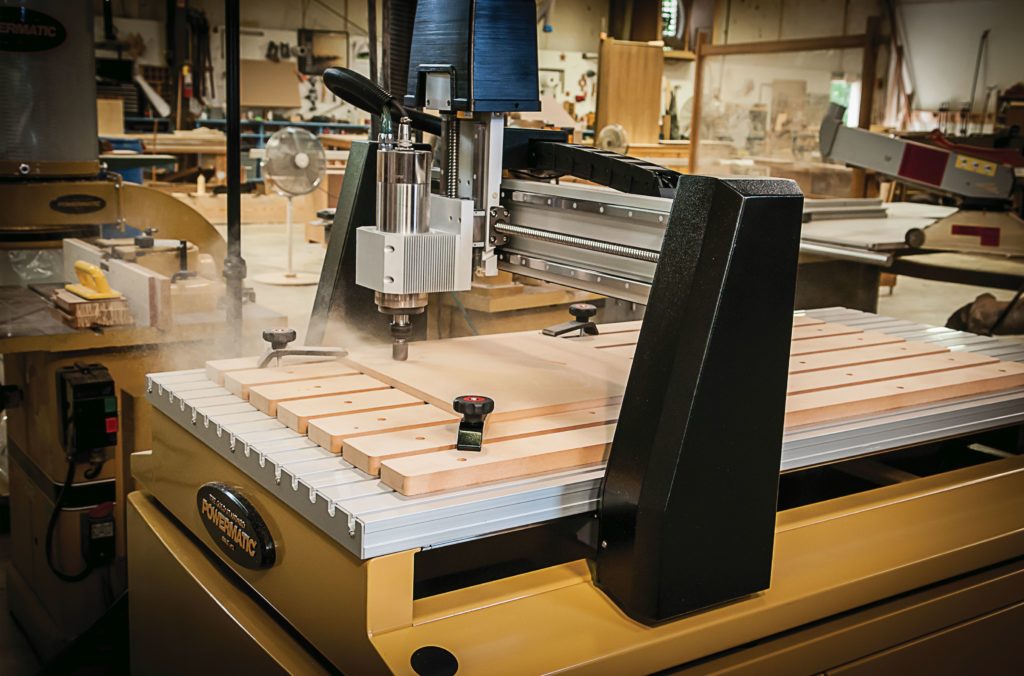
Have you heard about CNC routers? In case you’re working in the field of industry or technology, you might assume that there are some special automated tools that are required for better performance. Using them gives the possibility to accelerate the process of cutting the material for different purposes and, with this, to have greater precision than when it’s done by hand. One of these tools, used for cutting soft materials such as wood, PVC, or some types of non-ferrous metals is the CNC Router.
If you’re new to this field, you’ll definitely want to discover something new about this. There are many advantages to using CNC machines, so if your company has a manufacturer that hasn’t been using them yet, maybe it’s time for a change. Of course, before doing that, it’s also necessary to find out more – and this is exactly why we’re bringing you a mini-guide for this remarkable device.
What’s a CNC router?

The CNC router (or computer numerical control) is a cutting or engraving machine, which works with a milling tool or drill that can precisely and accurately carve materials into three or more dimensions at the same time. Thanks to the support and operation of the numerical control, not only is it appropriate for simple workpieces of wood or plastic, but it can also help with creating complex pieces of fine crafts, as well as highly valued orthopedic supplies.
This is a very useful tool when cutting materials such as wood, as previously stated, but it also cuts through wide variety of soft materials, such as acrylic, MDF or some metals such as aluminum, brass and bronze, among others. For a long time, cutting and engraving with the support of this device has been used for furniture manufacturing, wood carving and edge profiling.
As we said, it’s possible to mill three-dimensional models. For this to happen, the 3D file must be run through the software that makes it a set of instructions for cutting. This is done by analyzing the topology of the model and projecting a grid on it. When cutting, the drill follows these grid lines (the distance between the dividing lines can be controlled but is mainly based on the width of the tip of the drill itself).
How does this work?

The CNC router consists of a vertical axis manipulated by motors, which, as we mentioned, follow preset patterns. Therefore, it can be considered one of the most versatile machines for cutting in three and two dimensions on any type of surface. It allows the materialization of designs and ideas that previously only remained on paper due to the lack of tools for cutting and highlighting certain details.
The limitation of the designs that this router can make is practically non-existent since it makes cuts in the different axes. To work with this machine, it’s only necessary to create the desired design in software compatible with numerical control programming. The versatility and the system of the device allow the use of designs made in programs such as InDesign and Illustrator, AutoCAD, FreeHand, Rhinoceros, Inventor, and Google Sketchup, among others. The only requirement is that they need to be designed in vectors. The designs are translated by a code generation program, which makes it a language that will be read by the router.
The numerical control system allows you to control the position of a physical element in three axes: X (length), Y (height) and Z (depth). This system can be used on any type of tool that is mounted on a machine. By means of a software and a set of orders, the position coordinates of a specific point, that is the tool, are controlled with respect to an initial position (which is 0.0.0 of the machine). We could actually say that it’s a kind of GPS but applied to mechanization, and with much more precision.
Most of the models of the CNC router have a worktable of 1.30 m x 2.50 m, with the possibility of roughing, engraving and cutting depths of up to 15 cm, depending on the type of material. It’s also used for mass production in greater detail that is usually consistent and of high quality. Likewise, it’s able to reduce waste, the frequency of errors decreases to a minimum, as well as the time in which the product is finished.
Benefits of this technology

Here we’ll share some information that will help you discover why a CNC router is the best technical implementation that will bring more benefits to your business or your sale:
- Productivity. With this machine, it’s possible to have greater production capacity, which will allow you to commit to a greater number of customers.
- Precision. This can give will give an absolute quality to everything that’s done and allow you to follow in the preference of your loyal customers. With this technology, you can develop much more complex parts and satisfy the demands of all your customers. Thanks to the programming that allows this tool, and to its pattern of work through drill bits, diverse materials can be manipulated, defining in detail cuts, profiles, decorations, etc. The pieces to be cut will always be exactly the same, achieving a perfect assembly and series work. This type of technology allows an unequaled improvement in the finish, in addition to taking better advantage of the material since there is less waste and waste.
- Time-saving. The router helps with savings valuable times, in addition to greatly reducing human labor effort.
- Reduces mistakes. This tool reduces operating errors to almost zero, which will allow your operators to allocate that time in other activities aimed at closing sales with more prospects.
- Ergonomics. It improves the ergonomics – although certain safety patterns such as the use of glasses and hearing protection must be followed, the risks of injury to operators are minimal.
- Cutting speed and a wide variety of cut. One of the immediate benefits is the rapidity in the development of parts, increasing your production up to 400%. As it was previously mentioned, the device has the possibility to treat a wide variety of wood, plastic, acrylic, MDF, PVC among other materials such as non-ferrous metals (aluminum, copper, brass, gold, silver). All these thanks to the integration of a nebulizer which works as a refrigerant injector.
- Reduces production costs. Speeding up processes saves materials and time, which considerably increases productivity. By combining these factors, delivery, your customers’ satisfaction with your customers and of course the boost in the utility of your company is guaranteed. You’ll spend the money on buying and maintaining this machine, but for the good: make sure you check this guide to get more informed about the costs of its implementation.
Each of the above-mentioned factors helps to improve the sales process and considerably strengthen your position in the market. Use the opportunity to prove that your product or service has the premise of quality, reliability and innovation. Do it by enhancing it even more with handy devices like this – and your business will be thankful!














